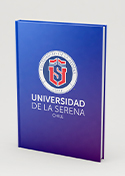Browsing by Author "Vasquez Yerko"
Massive scalar field perturbations in Weyl black holes
(SPRINGER, 2023/10/18) Becar Ramon; Gonzalez P. A.; Moncada Felipe; Vasquez Yerko
In this work we consider the propagation of massive scalar fields in the background of Weyl black holes, and we study the effect of the scalar field mass in the spectrum of the quasinormal frequencies (QNFs) via the Wentzel-Kramers-Brillouin (WKB) method and the pseudo-spectral Chebyshev method. The spectrum of QNFs is described by two families of modes: the photon sphere and the de Sitter modes. Essentially, we show via the WKB method that the photon sphere modes exhibit an anomalous behaviour of the decay rate of the QNFs; that is, the longest-lived modes are the ones with higher angular numbers, and there is a critical value of the scalar field mass beyond which the anomalous behaviour is inverted. We also analyse the effect of the scalar field mass on each family of modes and on their dominance, and we give an estimated value of the scalar field mass where the interchange in the dominant family occurs.
Quasinormal modes of a charged scalar field in Ernst black holes
(SPRINGER, 2023/01/25) Becar Ramon; Gonzalez P. A.; Vasquez Yerko
We consider the propagation of a charged massive scalar field in the background of a four-dimensional Ernst black hole and study its stability analyzing the quasinormal modes (QNMs), which are calculated using the semi-analytical Wentzel-Kramers-Brillouin method and numerically using the continued fraction method. We mainly find that for a scalar field mass less than a critical mass, the decay rate of the QNMs decreases when the harmonic angular number l increases; and for a scalar field mass greater than the critical mass, the behavior is inverted, i.e., the longest-lived modes are always the ones with the lowest angular number recovering the standard behavior. Also, we find a critical value of the external magnetic field, as well as a critical value of the scalar field charge that exhibits the same behavior with respect to the angular harmonic numbers. In addition, we show that the spacetime allows stable quasibound states, and we observe a splitting of the spectrum due to the Zeeman effect. Finally, we show that the unstable null geodesic in the equatorial plane is connected with the QNMs when the azimuthal quantum number satisfies m= & PLUSMN;l in the eikonal limit.
Reference frames and black hole thermodynamics
(IOP Publishing Ltd, 2023/12/01) Fiorini Franco; Gonzalez P. A.; Vasquez Yerko
In the context of the absolute parallelism formulation of General Relativity, and because of the fact that the scalar curvature can be written in purely torsional terms, it was known for a long time that a surface term based solely on the torsion tensor appears in the action. It was subsequently suggested that this term might play the role of the Gibbons -Hawking-York boundary term which, in turn, is associated to the free energy in the path integral approach, and then, to the black hole entropy by standard thermodynamic arguments. We show that the identification of the two boundary terms is rather incomplete, and that it strongly depends on the choice of the tetrad (frame) field used to reproduce a given metric. By considering variations of the tetrad field not necessarily subjected to Dirichlet-like conditions on the boundary surface, we find a class of frames adapted to the Schwarzschild spacetime in which the Gibbons-Hawking-York/torsion link is actually established, and conducing to the right black hole entropy without the need of any background subtraction. Remarkably, these frames are also responsible for the correct value of the gravitational energy as computed from the teleparallel energy-momentum pseudo-current.
Time like geodesics for five-dimensional Schwarzschild and Reissner-Nordstrom anti-de Sitter black holes
(SPRINGER, 2023/09/23) Gonzalez P. A.; Olivares Marco; Vasquez Yerko; Villanueva J. R.
The time like structure of the five-dimensional Schwarzschild and Reissner-Nordstrom anti-de Sitter black holes is studied in detail. Different kinds of motion are allowed and studied by using an adequate effective potential. Then, by solving the corresponding equations of motion, several trajectories and orbits are described in terms of Weierstra ss elliptic functions and elementary functions for neutral particles.
